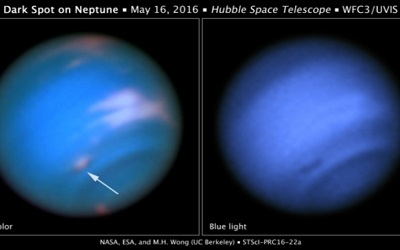随着PTE考生对PTE口语和PTE听力的重视,大家口语和听力的分数得到极大提高,但是PTE阅读渐渐成为考生们新的难题。墨尔本悉尼文波PTE特别为PTE考生们挑选了适合练习PTE阅读的文章,主题,内容,长度都与PTE阅读题中的文章相似。激活学过的词汇,更新新的词汇,提高阅读速度,全面提升自己的阅读能力。
The ice-giant Neptune remains a somewhat enigmatic world – perched at the edge of our classical solar system, but at what is merely the start of the great outer plains of the Kuiper-belt.
In 1989 the Voyager 2 spacecraft flew by and captured what are still our best images of this 17 Earth-mass planet, showing a deep blue globe with subtle streaks and a ‘Great Dark Spot’. That spot, an atmospheric vortex of high pressure, appeared to involve the highest wind speeds of any planet in the solar system, hitting an astonishing 2,100 kilometers per hour (1,300 miles per hour).
For Neptune to be this dynamic is somewhat counterintuitive. At the outer edge of the atmosphere the temperature is a frigid 55 Kelvin (-218 Celsius), while the deep high-pressure core of the planet reaches a relatively modest 5,400 Kelvin. Neptune is, by our standards, a very cold place.
Later data, taken by the Hubble Space Telescope in the mid 1990’s, confirmed similar features to those spotted by Voyager. Now, in 2016, Hubble has taken a fresh look and found another dark spot.
enigmatic:adj. 难以理解的,神秘的
perch:v. 停留
subtle:adj. 微妙的,难以捉摸的
streaks:n. 直横条
vortex:n. 漩涡
counterintuitive:adj.反直觉的
frigid:adj. 严寒的





